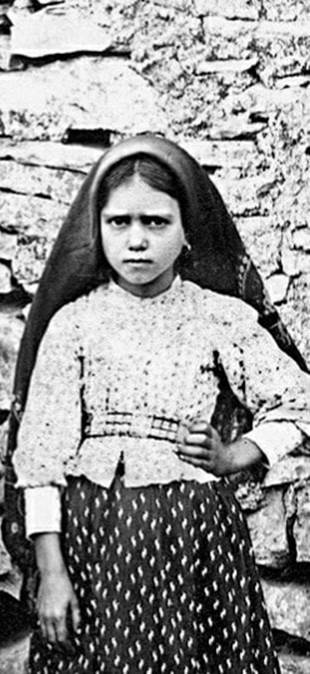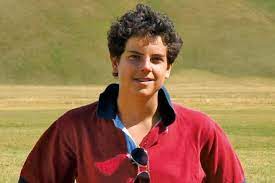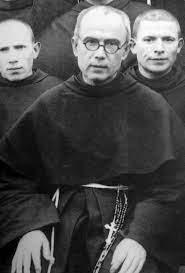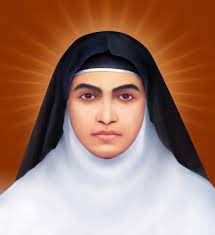'Sing unto the LORD, O ye saints of his, and give thanks at the remembrance of his holiness.' Psalms 30:4

Within our curriculum, through the drivers of FLAME, we encourage our pupils to develop their faith formation and consider inspirational people who have made a positive contribution. With this is mind, classes at St John Rigby are named after saints, allowing our children to learn about the lives of inspirational saints and understand their role as people who followed Jesus Christ, living their lives according to His teaching.
Reception: St Patrick

Feast day: March 17
Patron: of Ireland
St Patrick of Ireland is one of the world's most popular saints. He was born in Roman Britain and when he was fourteen or so, he was captured by Irish pirates during a raiding party and taken to Ireland as a slave to herd and tend sheep. At the time, Ireland was a land of Druids and pagans but Patrick turned to God and wrote his memoir, The Confession. Patrick's captivity lasted until he was twenty, when he escaped after having a dream from God in which he was told to leave Ireland by going to the coast. There he found some sailors who took him back to Britain and was reunited with his family. Later, he was ordained a priest and sent to take the Gospel to Ireland. He often used shamrocks to explain the Holy Trinity and entire kingdoms were eventually converted to Christianity after hearing Patrick's message.
St Patrick, pray for us.
Year 1: St Jacinta

Jacinta Marto (March 11, 1910 - February 20, 1920), with her brother, Francisco Marto (June 11, 1908 - April 4, 1919), together with their cousin, Lúcia dos Santos (1907-2005) were the children from Aljustrel near Fátima, Portugal, who witnessed three apparitions of an angel in 1916 and several apparitions of the Blessed Virgin Mary in 1917. Jacinta prayed the rosary daily, doing a lot of good, praying for others and offering us sacrifices for them. Alongside her brother, she is one of the youngest saints canonised by the Catholic Church in modern times.
St Jacinta, pray for us.
Year 1: St Therese of Lisieux

Feast day: October 1
Patron: of the Missions
Generations of Catholics have admired this young saint, called her the "Little Flower", and found in her short life more inspiration for their own lives than in volumes by theologians. She was born in France in 1873 and is known for her ‘little way’ of holiness, doing small things every day, with a great amount of love.
Therese died when she was 24, after having lived as cloistered Carmelite for less than ten years. She never went on missions, never founded a religious order, never performed great works. The only book of hers, published after her death, was an brief edited version of her journal called "Story of a Soul." (Collections of her letters and restored versions of her journals have been published recently.) But within 28 years of her death, the public demand was so great that she was canonized.
St Therese, pray for us.
Year 2: St Winefride
Feast day: November 3
Patron: of Holywell
Winifred was the daughter of a lord. She lived in
North Wales, near Flint, in the 7th century. A young prince, Caradoc, visited where Winifred lived. He saw her and thought she was very pretty. He decided to steal her from her family and force her to be his wife. Winifred was frightened of Caradoc and ran away to a nearby church, hoping she would be safe in the holy place. Caradoc was selfish and used to getting his own way. He was very angry that Winifred said “No” to him. He chased after her and, in anger, killed her with his sword. Winifred's uncle, Beuno, was just leaving the church and with horror saw what had happened. Beuno was a priest, a very holy man. He wished bad things would happen to Caradoc, who immediately fell down dead. And that was the end of the nasty prince.
Beuno hurried back to the church and prayed for Winifred. By a miracle Winifred was healed and she came back to life. There was always a red scar where Caradoc had hurt her, but she was alive!
Where Winifred fell when she died, a holy spring of water came up from the ground. The water was special – people believed it could heal them when they were sick or injured. A new church was built around the spring, to celebrate the miracle. A town was built and is still there. It is called Holywell and is only a few minutes away from Flint, a near-by town. For hundreds of years, thousands of people visited the well in search of healing. Many people still visit today.
St Winifred, pray for us.
Year 2: Bernadette

Feast day: April 16
Patron: of illness, people ridiculed for their piety, poverty, shepherds, shepherdesses, and Lourdes, France
St Bernadette was born in Lourdes, France on January 7, 1844. Her parents were very poor and she was the first of nine children. She was baptized at St Pierre's, the local parish church, on January 9. As a toddler, Bernadette contracted cholera and suffered extreme asthma. Unfortunately, she lived the rest of her life in poor health.
On Thursday, February 11, 1858, fourteen-year-old Bernadette was sent with her younger sister and a friend to gather firewood, when a very beautiful lady appeared to her above a rose bush in a grotto called Massabielle (Tuta de Massavielha). The woman wore blue and white and smiled at Bernadette before making the sign of the cross with a rosary of ivory and gold. Bernadette fell to her knees, took out her own rosary and began to pray.
On February 18, Bernadette said "the vision" asked her to return to the grotto each day for a fortnight. With each visit, Bernadette saw the Virgin Mary, who eventually identified herself as the Immaculate Conception.
Many miracles have since been documented during pilgrimages to Lourdes. Bernadette was beatified in 1925 and canonised by Pope Pius XI in December 1933.
St Bernadette, pray for us.
Year 3: Our Lady of Walsingham

Feast day: September 24
Patron: of England
Our Lady of Walsingham is a title of the Blessed Virgin Mary associated with the Marian apparitions to Richeldis de Faverches, a pious English noblewoman, in 1061 in the village of Walsingham in Norfolk. Lady Richeldis had a structure built named “The Holy House” in Walsingham which later became a shrine and place of pilgrimage.
In three visions Richeldis was taken by Mary to be shown the house in Nazareth where Gabriel had announced the news of the birth of Jesus. Our Lady then asked her to build an exact replica of that house in Walsingham.
Throughout the centuries, Walsingham became one of the most popular shrines in England. Many pilgrims returned from their visit healed in body and spirit. Walsingham received visits from King Henry III, Edward II, Edward III, Henry IV, Edward IV, Henry VII and Henry VIII, who finally brought about its destruction in 1538. In 1897, the first official Catholic pilgrimage after the Reformation took place at the restored 14th century Slipper Chapel, which is now the centre of the Roman Catholic National Shrine.
Thousands of pilgrims visit every year.
Our Lady of Walsingham, pray for us.
Year 3: St Andrew

Feast day: August 22
Death: 877
St Andrew has been celebrated in Scotland for over one thousand years, with feasts being held in his honour as far back as the year 1000 AD. However, it wasn’t until 1320, when Scotland’s independence was declared with the signing of The Declaration of Arbroath, that he officially became Scotland’s patron saint. Since then, St Andrew has become an integral part of Scottish society. The flag of Scotland is the saltire, also known as St Andrew’s Cross, and the ancient town of St Andrews was named due to its claim of being the final resting place of St Andrew.
Andrew, along with Peter, James and John formed the inner circle of Jesus’ 12 apostles. Whilst it is not certain where Andrew actually preached – Scythia, Thrace and Asia Minor have all been mentioned – it appears he travelled great distances in order to spread the word, and it may be this which links him with Scotland. One legend builds upon Andrew’s extensive travels, claiming that he actually came to Scotland and built a church in Fife. This town is now called St Andrews, and the church became a centre for evangelism, and pilgrims came from all over Britain to pray there. St. Andrew has also been remembered down through the ages for the way he met his terrible death in A.D. 60. It is said that he believed himself unworthy to be crucified on a cross like that of Christ, and so he met his end on a ‘saltire’, or X-shaped cross (St Andrew’s cross) which became his symbol.
St Andrew, pray for us.
Year 4: Blessed Carlo Acutis

Feast day: October 12
Patron: of computer programmers and youth
Blessed Carlo Acutis was born on May 3, 1991 in London, United Kingdom to Andrea Acutis and Antonia Salzano. In addition to his love for the Church, Acutis was deeply interested in computers and taught himself how to code and build websites while still in primary school. Acutis was known to give away his pocket money to the poor and to speak up in defence of the disabled. He had a habit of inviting kids to his house whose parents were divorcing to support them. Acutis used his knowledge of computers and coding to build websites for Catholic organisations. His most popular website was one that listed miracles from around the world based on a catalogue he compiled since age 11. He completed the site shortly before his death. When Acutis developed leukemia as a teenager, he offered up his suffering for Pope Benedict XVI and the Church.
Blessed Carlo Acutis, pray for us.
Year 4: Saint Josephine Bakhita

Feast day: February 8
Patron: of Sudan
Saint Josephine Margaret Bakhita was born around 1869 in the village of Olgossa in the Darfur region of Sudan. She was a member of the Daju people and her uncle was a tribal chief. Due to her family lineage, she grew up happy and relatively prosperous, saying that as a child, she did not know suffering.
Historians believe that sometime in February 1877, Josephine was kidnapped by Arab slave traders. For the next 12 years she would be bought, sold and given away over a dozen times. She spent so much time in captivity that she forgot her original name.
As a slave, her experiences varied from fair treatment to cruel. In 1883, the Turkish general sold her to the Italian Vice Consul, Callisto Legani. He was a much kinder master. Her new mistress placed her in the custody of the Canossian Sisters in Venice, whilst she travelled. While Josephine was with the sisters, she learnt about God and when her mistress returned, she refused to leave. For the next 42 years of her life, she worked as a cook and a doorkeeper at the convent. She also travelled and visited other convents telling her story to other sisters and preparing them for work in Africa. She was known for her gentle voice and smile. She was gentle and charismatic, and was often referred to lovingly as the "little brown sister" or honourably as the "black mother."
St Josephine Bakhita, pray for us.
Year 5: Blessed Cyprian Tansi

Feast day: January 20
Patron: of Nigerian priests
Blessed Cyprian Michael Iwene Tansi was born in 1903 in Igboezunu, at the edge of: the forest near the ancient city of Aguleri in southern Nigeria. His parents, Tabansi and Ejikwevi, were Igbo farmers who practised the "traditional religion" and gave him the name Iwene at birth. In 1909, he was sent to the Christian village of Nduka, where he was baptised three years later by Irish missionaries and given the name Michael. He taught at Holy Trinity Primary School in Onitsha for three years and served for a year as headmaster at St Joseph School in Aguleri. In 1925, against the wishes of his family, he entered St Paul's Seminary in Igbariam. After finishing his philosophical and theological studies, he was ordained a priest. On foot or bicycle, Fr Tansi went from village to village preaching, catechising and setting up prayer centres that eventually became parishes. He spent hours and hours hearing confessions, even until late at night. Later, he felt called to be a monk and entered the Trappist Abbey of Mount St Bernard in Leicestershire, England. For the next seven years, he lived a hidden life of prayer and work, humility and obedience, in faithful and generous observance of the Cistercian rule.
Blessed Cyprian Tansi, pray for us.
Year 5: St Maximillian Kolbe

Feast day: August 14
Patron: of prisoners
St Maximilian Kolbe was born as Raymund Kolbe on January 8, 1894, in Poland. In 1910, Kolbe joined the Franciscans and was given the religious name Maximilian. In 1918, he was ordained a priest and continued his work of promoting Mary throughout Poland. Over the next several years, Kolbe took on publishing. Kolbe also founded monasteries in both Japan and India.
In 1936, Kolbe's poor health forced him to return home to Poland, and once the WWII invasion by Germany began, he became one of the only brothers to remain in the monastery. He opened up a temporary hospital to aid those in need. When his town was captured, Kolbe was sent to prison but released three months later. Kolbe refused to sign a document that would recognise him as a German citizen with his German ancestry and continued to work in his monastery, providing shelter for refugees.
On 17 February 1941, he was arrested by the German Secret Police and sent to a concentration camp - Auschwitz - as prisoner and was given the number, #16670. In July 1941 a man from Kolbe's barracks (sleeping area) vanished and the Nazi camp commander, picked 10 men from the same barracks to be killed, in order to deter (put off) further escape attempts.

During the time in the cell, Kolbe led the men in songs and prayer to keep their spirits up.
He died a few weeks later. Pope John Paul II declared him a saint in October 10, 1982.
St Maximillian Kolbe, pray for us.
Year 6: St Thomas More

Feast day: June 22
Patron: of adopted children lawyers, civil servants, politicians
Thomas More was born in London on February 7, 1478. Thomas More entered Oxford in 1492, where he would learn Latin, Greek and prepare for his future studies. In 1494, he left Oxford to become a lawyer and he trained in London until 1502 when he was finally approved to begin practice. In 1504, More was elected to Parliament to represent the region of Great Yarmouth, and in 1510 rose to represent London. During his service to the people of London, he earned a reputation as being honest and effective. He became a Privy Counselor in 1514. He was skilled as a theologian and a writer. Among his most famous works is "Utopia," about a fictional, idealistic island society. From 1517 on, Henry VIII took a liking to Thomas More, and gave him posts of ever increasing responsibility. In 1521, he was knighted and made Under-Treasurer of the Exchequer. More became Lord Chancellor in 1529. The relationship between More and Henry became strained because Henry wanted to divorce his wife and the church in Rome wouldn’t agree to it. More was imprisoned and later killed. He has been widely remembered as a man of tremendous integrity, and he has since been described as a martyr and canonised a saint.
St Thomas More, pray for us.
Year 6: St Alphonsa

Feast day: July 28
Patron: against illness
St Alphonsa was born as Annakkutty (little Anna) in Kudamaloor, a village in the princely state of Travancore which was under the British Raj (now present day Kottayam district, Kerala, India) to Joseph and Mary Muttathupadathu. She was baptised on 27 August 1910. In 1928, she joined the Franciscan Clarist Congregation and took the name Alphonsa. She taught elementary school, but was often sick and unable to teach. Her health continued to deteriorate over a period of months. She died on 28 July 1946, aged 35. Her tomb in Bharananganam has become a pilgrimage site as miracles have been reported by some faithful. The miracle attributed to her intercession and approved by the Vatican for the canonisation was the healing of the club foot of an infant in 1999.
St Alphonsa, pray for us.
